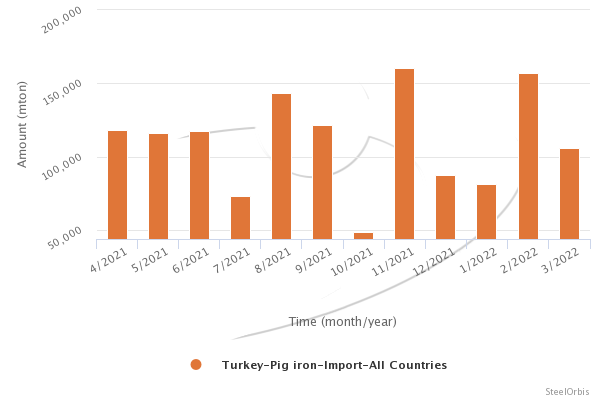Giant jackhammers and container cities: Turkey’s quake zone one year on
Suselya Yolcu has worked hard to rebuild her life since the devastating February 6 earthquake, from sleeping in her car to now selling Turkish delight in a kaleidoscope of colours at a makeshift market in the historic city of Antakya.
The bazaar, made up of neat rows of wood-clad containers that also host barbers, soap sellers and a veterinarian’s office, is an oasis in the city in south-east Turkey that is still reeling from the disaster that devastated it and the wider region. Beyond the confines of the market lie vast fields of rubble and mangled buildings that lean at perilous angles as a result of the twin tremors a year ago.
Yet Yolcu, a mother of three, considers herself among the fortunate ones. Her family has moved back into their renovated Antakya home that was damaged by the quake, although she still finds the suffering of others in her home city unbearable.
“A lot of people are living in much worse conditions,” said Yolcu. Many earthquake survivors still languish in temporary shelters, containers and tents. “It’s heartbreaking,” she said, holding back tears.

The physical scars left by the magnitude 7 quakes that struck Turkey and neighbouring Syria are everywhere in Antakya, where half the buildings were destroyed. Sprawling container cities dot its outskirts, while an army of dump trucks, earth movers and giant jackhammers work relentlessly to tear down what remains of its shattered apartments, offices and historic buildings.
The frenetic work is changing Antakya, capital of Hatay province, at a bewildering pace, in the latest reinvention of a city that over the centuries has been an important Roman town, a centre of Christianity and a notable stop on the “silk road” to Asia.
Yet despite outward signs of progress, survivors say they face problems accessing clean water and other basic needs, as well as housing, and are worried about their personal safety.
Hikmet Çinçin, a longtime Antakya resident who ran the city’s chamber of commerce for nearly two decades, said that while the government was focused on long-term priorities, many survivors were struggling just to get by.
“The problems of sewage, hygiene and drinking water continue, the housing problem continues,” Çinçin told the Financial Times from an apartment block that, like many in Antakya, was still criss-crossed with fissures. “So how can we talk about development in such poverty?”

The quakes killed about 53,000 people in Turkey and drove 6mn people into temporary shelter or to other regions, the interior ministry said. Hatay was the worst hit of the 11 affected provinces, with a death toll of 24,000, while a further 8,000 people were killed in neighbouring Syria, according to data from Turkey’s disaster management agency Afad and the International Blue Crescent Relief and Development Foundation.
Three weeks after the disaster, with the country still reeling, Turkish President Recep Tayyip Erdoğan pledged his government would “heal the wounds of the earthquake to a great extent within a year”.
The promise came ahead of a closely fought presidential election, as the strongman leader faced public criticism for the response to the disaster. Erdoğan won the vote, to extend his rule over Turkey to a third decade.
But his words have not been met with the required action. Progress has been well short of what was anticipated, with the government struggling to contend with the extraordinary scale of the disaster.
Tensions between the central government and municipal authorities have snarled progress, according to officials. They said it had also been slowed by disputes over buildings that engineers want to condemn to demolition against their owners’ wishes.
Engineers and urban planners say that the devastation was considerably worsened by lax enforcement of building codes and Turkey’s long history of amnesty programmes providing forgiveness for faulty construction.
The government regularly highlights the scale of its response efforts, while analysts say any country would have struggled to muster an adequate response to such a disaster.

Erdoğan said a month after the quake that he expected some 300,000 housing units to be rebuilt within a year, but the total has come in well short of his expectations. The shortfall had left about 700,000 people stuck in more than 400 container cities, according to Afad.
Bilge, a mother who declined to give her surname, has been living in a container camp in Kahramanmaraş, another hard-hit province, after the quakes knocked down her home.
Those living in container camps typically receive help with their day-to-day needs such as heating and electricity, but Bilge was unsure when she would finally be able to find permanent housing. “We have only one need, and that’s a home. We’re still waiting,” she said.
The Erdoğan government plans to hand over about 46,000 independent housing units that have been rebuilt in time for the first anniversary of the quake on Tuesday, according to deputy environment and urbanisation minister Refik Tuzcuoğlu. But even he admitted this was well short of the 300,000-600,000 units needed.
Tuzcuoğlu said the rebuilding of 200,000 units was ongoing and that the government was working on the tender process for a further 100,000. The total cost of rebuilding in the 120,000 square kilometre area affected by the quake could reach $100bn, according to local officials and engineers.
“We’re quickly recovering from the effects and the destruction caused by the earthquake,” Tuzcuoğlu said. “We’re hoping to resolve the issue of permanent housing within a very short period of time.”
The Turkish government does not retain a central repository for data on the earthquake, so the FT compiled facts and figures based on publicly available documents, press conferences and interviews.
Nikolaus Meyer-Landrut, head of the EU delegation in Turkey, said the country’s “needs are endless” given the scale of destruction to homes, schools, hospitals and infrastructure. The EU joined rescue efforts after the quake and has continued to play a role in redevelopment.

Hatay governor Mustafa Masatlı, an Erdoğan appointee, said the government had made progress on meeting humanitarian needs. For example, he said, the government was distributing 25-30 lorries of water a day in his province.
But Meyer-Landrut was in no doubt that people in the quake zone remained badly affected. “There are still needs in terms of hygiene, there are still needs in terms of protection, there are particular needs for vulnerable communities,” he explained. “People are still traumatised.”
Yolcu, the mother of three, takes comfort from the daffodils that are back in season in Antakya, and the support of friends and neighbours who have rallied round. “We’re trying to heal each other, because we all know our wounds,” she said.
Additional reporting by Funja Güler in Ankara, Gonca Tokyol in Antakya and Ayla Jean Yackley in Kahramanmaraş



